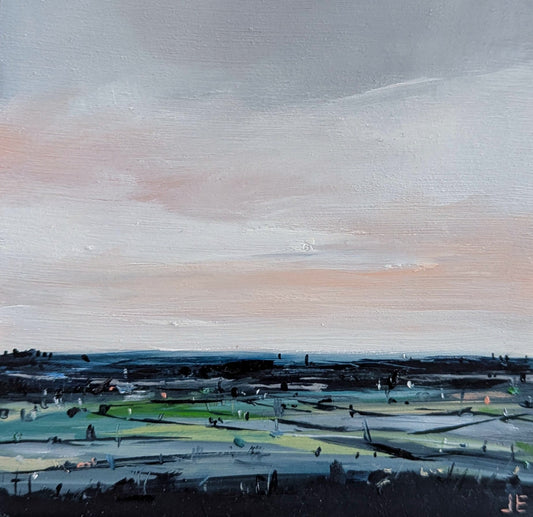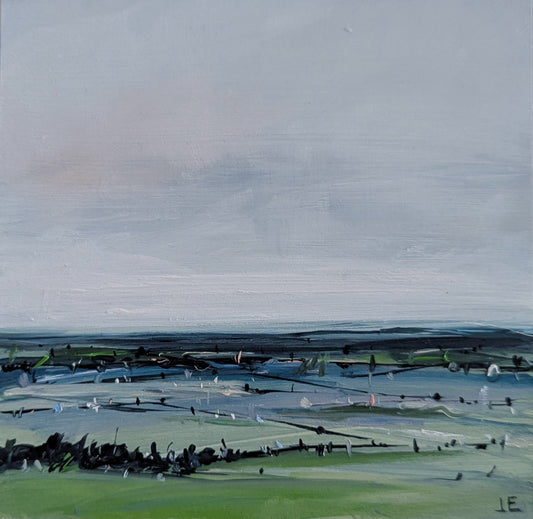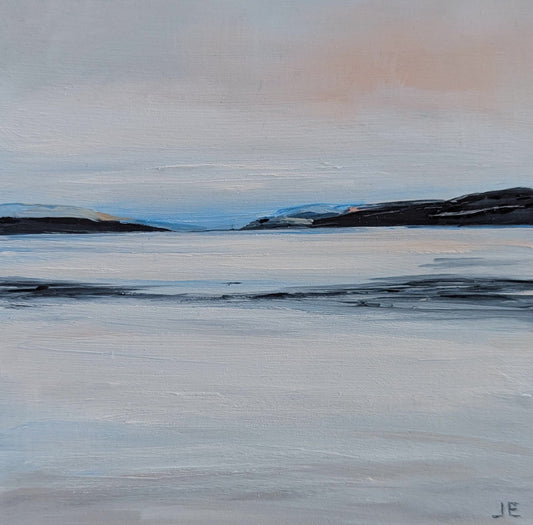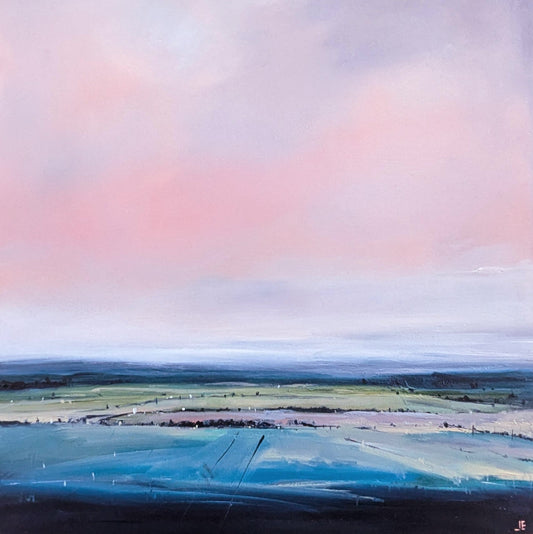
Oil Painting: An Introduction
Joanna EarlShare
Table of Contents
- History and Facts about Oil Painting
- Originating in Europe during the 15th century
- Revolutionising art with greater realism and detail
- Embraced by renowned artists
- Durability contributing to preservation
- Essential Supplies for Oil Painting:
- Quality Brushes: The Backbone of Your Artistic Journey
- Palette Knife: Mixing Paints & Creating Texture
- Canvas: Your Creative Playground
- High-Quality Oil Paints: Unleashing Your Colourful Imagination
- Oil Painting Techniques for Every Artist:
- Wet-on-Wet Technique: Blending Colours on the Canvas
- Glazing: Adding Depth and Luminosity with Transparent Layers
- Impasto Technique: Creating Texture with Thick Brushstrokes
- Scumbling: Adding Texture with Opaque Layers
- Support Options for Oil Painting:
- Stretched Canvases: Traditional and Versatile
- Canvas Panels: Lightweight Alternatives
- Masonite Boards: Rigid and Warp-Resistant
- Paper: Unconventional Effects
- Famous Works and Examples of Oil Painting Supports:
- Vincent van Gogh's "The Starry Night": A Canvas Masterpiece
- Johannes Vermeer's "Girl with a Pearl Earring": Embracing Wooden Panel Supports
- Leonardo da Vinci's "The Last Supper": Exploring Alternative Support Options
- Claude Monet's "Sunflowers": Paper as an Unconventional Support
- Recommended Reading and Resources for Oil Painting Beginners:
- "Oil Painting For Dummies" by Anita Marie Giddings and Sherry Stone Clifton
- Online tutorials and video lessons available on platforms like YouTube
- Art supply stores often offer books and guides specific to oil painting techniques
- Joining local art groups or workshops can provide valuable guidance and feedback
- Embrace the Beauty of Oil Painting:
Are you ready to dive into the captivating world of oil painting? This versatile and popular form of artistic expression, which involves using underpainting techniques, has captivated audiences for centuries. From the vibrant colours achieved with tempera paints to the rich textures created with brushes, oil painting offers artists an incredible range of possibilities. So grab your easel and get ready to explore the mesmerizing art of oil painting.
Dating back to the 15th century, oil painting utilises pigments mixed with drying oils like linseed to create stunning results. These oils, including walnut and poppy seed, are used as mediums, giving the paint its unique characteristics. Artists often begin with underpainting and experiment with different colour mixes to achieve their desired effects. A layer of gesso is applied to prepare the canvas before applying the tempera paints.
One of the critical advantages of oil painting is its ability to create depth and texture using brushes and tempera paints. Artists can build layers that bring their subjects to life with each brush stroke, allowing for unique colour mixes. Whether capturing a serene landscape or a striking portrait, oil paint on an easel will enable you to approach your subject with unparalleled flexibility.
However, when working with oil paint, it's important to note that patience and time are required for proper drying. Unlike other quickly dry mediums, oil paintings can take days or weeks to fully dry and cure. This slow-drying process allows artists to adjust and refine their work over multiple painting sessions using gesso, brushes, colour mixes, and water.
If you're looking for a more spontaneous approach, the alla prima (wet-on-wet) technique might be your style. Popularised in the 19th century by masters like Monet and Van Gogh, alla prima involves completing a painting in one sitting without waiting for layers of gesso to dry. This technique captures a sense of immediacy and energy in the final piece, as artists work with brushes and create vibrant colour mixes using water.
History and Facts about Oil Painting
Oil painting, a technique that originated in Europe during the 15th century, revolutionized the world of art by allowing for greater realism and detail. Artists like Leonardo da Vinci and Rembrandt embraced this technique, using brushes and mediums to apply gesso and water to create masterpieces that have stood the test of time.
Originating in Europe during the 15th century
During the 15th century, oil painting emerged as a popular artistic technique in Northern Europe. Before this period, artists primarily used tempera paint, which had limitations. However, with oil paints, artists discovered new flexibility and richness in their works.
The use of linseed oil as a medium in the painting process was instrumental in this transformation. Artists found that mixing pigments with linseed oil could create vibrant colours that dried slowly and allowed for blending on the canvas. This slow drying time gave artists more control over their work during a painting session and enabled them to achieve intricate details. Linseed oil is one of the mediums commonly used in the painting process, along with gesso.
Revolutionising art with greater realism and detail
Oil painting, with its use of brushes and pigments, revolutionised artistic expression. The mediums and gesso used in this technique allowed artists to capture subtle nuances of light and shade, resulting in remarkably realistic depictions. The brushstrokes created texture, adding depth and a three-dimensional quality to the paintings.
In the 19th century, artists quickly recognised the potential of oil painting techniques to convey emotions and tell stories through their works. The use of brushes, mediums, and gesso became more nuanced and expressive as artists experimented with various palettes to create different moods within their paintings.
Embraced by renowned artists
Some of history's most celebrated artists embraced oil painting techniques, leaving an indelible mark on the art world. Leonardo da Vinci utilised these methods in his iconic works such as "Mona Lisa" and "The Last Supper." His meticulous attention to detail and his mastery of colour made these paintings enduring masterpieces.
Rembrandt van Rijn significantly contributed to the development of oil painting through his use of brushes, mediums, and gesso. His mastery of light and shadow, known as chiaroscuro, added depth and drama to his portraits. Rembrandt's technical brilliance can be seen in works like "The Night Watch" and "Self-Portrait with Two Circles," where he expertly layered his paints. These paintings continue to captivate viewers with their use of brushes, mediums, gesso, and layering techniques.
Durability contributing to preservation
One of the reasons oil paintings have survived over centuries is their durability. The slow drying time of oil paints, along with the use of gesso as a primer, allowed artists to work on their compositions over extended periods using brushes and various mediums, ensuring meticulous attention to detail. This quality made oil paintings resistant to ageing and decay, as multiple layers were built up using these techniques.
The application of varnish using brushes and oil sticks on completed works provided a protective layer that shielded the paintings from environmental factors. Varnish enhanced the colours and acted as a barrier against dust, dirt, moisture, and safflower oil.
Oil paintings, created using brushes and layered techniques, have stood the test of time. Their resilience allows them to withstand different conditions, preserving these masterpieces for us to admire in museums around the world.
Essential Supplies for Oil Painting:
Quality Brushes: The Backbone of Your Artistic Journey
One cannot underestimate the importance of quality brushes in the painting process. These tools are the backbone of your artistic journey, allowing you to translate your creative vision onto the canvas with precision and control during each painting session. Investing in high-quality brushes, whether you opt for brushes made from regular oil paint natural bristles or their synthetic counterparts, is necessary.
Natural bristle brushes, typically made from hog hair, offer excellent paint absorption and release properties. They are ideal for applying thick layers of paint and creating textured effects. On the other hand, synthetic bristle brushes are known for their durability and versatility. They work well with both heavy-bodied paints and more fluid mediums.
To achieve different brushstrokes and effects in your oil paintings, it's recommended to have a variety of brush shapes and sizes in your collection. Round brushes are great for detail work and blending colours seamlessly. Flat brushes allow for broader strokes and can cover larger areas efficiently. Filbert brushes combine the best qualities of round and flat brushes, making them versatile tools that suit various painting techniques.
Palette Knife: Mixing Paints & Creating Texture
An essential tool in every oil painter's arsenal is the palette knife, along with brushes. This versatile instrument, along with brushes, serves two primary purposes: mixing paints on your palette and creating texture directly on the canvas. Its flat blade, along with brushes, allows you to blend colours effortlessly while maintaining their purity.
When mixing paints with a palette knife, you can achieve smoother colour gradations than using a brush alone. Mixing colours precisely is crucial to capture accurate hues or creating unique shades for your artwork.
Palette knives enable artists to add texture to their paintings by applying thick layers of paint or scraping away excess pigment selectively. This technique adds depth and visual interest to your artwork while allowing you to experiment with different surface finishes.
Canvas: Your Creative Playground
The choice of painting surface is vital in oil painting, and canvas or canvas boards are the go-to options for many artists. Canvas provides a durable and flexible foundation that can withstand the weight and movement of oil paints.
Canvas comes in various forms, including stretched canvases, canvas panels, and canvas rolls. Stretched canvases are ready to use out of the box, providing a taut surface for your artwork. Canvas panels offer a more portable option while maintaining stability. Alternatively, canvas rolls allow you to customize the size and shape of your painting surface.
Before starting your masterpiece on canvas, preparing the surface by applying gesso is essential. Gesso acts as a primer that seals the fibres of the canvas, preventing oil from deteriorating over time. It also provides a smooth and consistent surface for paint application.
High-Quality Oil Paints: Unleashing Your Colourful Imagination
Selecting high-quality oil paints is crucial in unleashing your colourful imagination onto the canvas. Regular oil paints offer an extensive range of colours, allowing you to create vibrant and captivating artwork.
Oil paints consist of pigments suspended in linseed oil as their binder. The pigments determine the colour properties, while linseed oil ensures proper adhesion to the painting surface. Some artists may also use other binders like walnut or poppy seed oil for specific effects or personal preferences.
Investing in good quality paints guarantees better colour intensity and ensures longevity and resistance against fading over time. With a wide range of colours, you can mix hues effortlessly to achieve desired shades or experiment with different colour schemes to evoke various moods within your artwork.
In addition to brushes and paints, there are other supplies worth considering when engaging in oil painting:
-
Solvents: Used for thinning paint consistency and cleaning brushes.
-
Brush Soap: Essential for maintaining the longevity of your brushes by effectively cleaning off oil paint residues.
-
Resin: A varnish-like substance used as a final protective coat for finished oil paintings, enhancing their appearance and durability.
Oil Painting Techniques for Every Artist:
Wet-on-Wet Technique: Blending Colours on the Canvas
One of the most popular and versatile oil painting techniques is the wet-on-wet technique. This method allows artists to blend colours directly on the canvas, creating smooth transitions and vibrant hues. This technique lets you sense depth and dimension in your oil paintings.
To begin, apply a thin layer of oil paint to your canvas. Then, using a brush or palette knife, add colours while the base layer is still wet. The wet surface allows the colours to mix and merge effortlessly, resulting in beautiful gradients and soft edges.
The wet-on-wet technique is beneficial for capturing atmospheric effects such as sunsets or misty landscapes. By manipulating the wet paint on your canvas, you can create stunning visual effects that evoke emotion and captivate viewers.
Glazing: Adding Depth and Luminosity with Transparent Layers
Another essential oil painting technique is glazing. This involves layering transparent paint over dry layers to create depth and luminosity in your artwork. By applying thin glazes of colour, you can enhance the richness and complexity of your oil paintings.
To execute this technique effectively, let your initial layers dry completely. Then mix your desired colour with a medium such as a linseed oil or varnish to increase transparency. Using a soft brush or cloth, gently apply the glaze onto specific areas of your painting.
Glazing is particularly effective when adding subtle shifts in colour temperature or creating intricate details like reflections or highlights. It allows light to pass through multiple layers of paint, giving your artwork a radiant glow that cannot be achieved with the direct application alone.
Impasto Technique: Creating Texture with Thick Brushstrokes
The impasto technique is an excellent choice for artists looking to add texture and three-dimensionality to their oil paintings. This method involves applying thick layers of paint onto the canvas surface, resulting in prominent brushstrokes that can be seen and felt.
To achieve an impasto effect, use a palette knife or a stiff brush to apply generous amounts of oil paint directly onto your canvas. Build up the layers gradually, allowing each one to dry before adding the next. This technique is particularly effective for creating tactile elements such as tree bark, flower petals, or textured landscapes.
Impasto adds not only physical texture but also creates visual interest by capturing light and casting shadows on the raised areas of your artwork. It adds a dynamic quality to your oil paintings, making them visually striking and engaging for viewers.
Scumbling: Adding Texture with Opaque Layers
Scumbling is another oil painting technique that allows artists to add texture and visual interest to their artworks. Unlike glazing, which involves transparent layers, scumbling utilises thin, opaque paint applied over dry layers.
Mix your desired colour with a small amount of white or another light-value colour to create a scumbled effect. Using a dry brush or cloth, gently apply the mixture over specific areas of your painting. The dry underlying layers will catch some opaque pigment, creating a textured appearance.
This technique is particularly effective for suggesting rough surfaces like tree bark or stone walls. It adds depth and complexity to your oil paintings while allowing experimentation with different textures and effects.
Support Options for Oil Painting:
Stretched Canvases: Traditional and Versatile
Stretched canvases are a classic support option for oil painting, offering artists a versatile surface to work on. These canvases consist of a wooden frame with canvas stretched tightly across it. The tension of the canvas provides a stable base for applying oil paints.
One of the main advantages of using stretched canvases is their ability to withstand the natural expansion and contraction of oil paints as they dry. This prevents cracking or warping, ensuring your artwork remains intact for years. Stretched canvases come in various sizes, allowing you to choose the dimensions that best suit your artistic vision.
Consider priming the surface before applying your oil paints when working with stretched canvases. Primers create a barrier between the canvas and paint, preventing potential damage caused by direct contact. They also enhance the colour vibrancy and improve paint adhesion.
Canvas Panels: Lightweight Alternatives
Canvas panels provide an excellent lightweight alternative to stretched canvases, making them ideal for studies or plein air painting. These panels consist of canvas adhered to a sturdy board or panel, offering artists a portable and convenient option.
The advantage of using canvas panels for regular oil paint lies in their compactness and ease of handling. You can easily carry them around without worrying about damaging delicate stretched canvases during transportation. Canvas panels also offer firm support that allows for precise brushwork and control over details in your artwork.
Like stretched canvases, canvas panels can be primed before painting to ensure optimal results. This step helps create an even surface texture while protecting the underlying material from any potential adverse effects caused by direct contact with oil paints.
Masonite Boards: Rigid and Warp-Resistant
Masonite boards provide another support option for oil painting, offering artists a rigid surface that resists warping over time. These boards are made from compressed wood fibres and offer a sturdy foundation for your artwork.
One of the key advantages of using Masonite boards is their durability. Unlike canvas, which may sag or warp over time, Masonite boards maintain their flatness and stability, ensuring your oil paintings remain pristine. This makes them particularly suitable for more significant works or pieces that require rigid support.
Before starting your oil painting on Masonite boards, applying a suitable primer to enhance adhesion and protect the surface is recommended. Primers designed for wood panels can help create an optimal painting surface while preventing potential damage caused by direct contact with oil paints.
Paper: Unconventional Effects
While less common than stretched canvases or panels, paper can also be used as a support option for oil painting when treated with specific primers. This unconventional approach allows artists to experiment with unique effects and textures in their artworks.
When working with paper as a support option, choosing heavyweight documents that can withstand the weight of oil paints without buckling or deteriorating is crucial. Applying a primer designed for oil paints helps seal the paper's surface and prevents any adverse interactions between the colour and the paper fibres.
Using paper as a support option opens up new possibilities for artistic expression. The porous nature of specific papers can create interesting effects when combined with various oil painting techniques. Artists can explore different textures, layering methods, and brushwork styles to achieve stunning results on this alternative support material.
Famous Works and Examples of Oil Painting Supports:
Vincent van Gogh's "The Starry Night": A Canvas Masterpiece
Vincent van Gogh's iconic painting, "The Starry Night," is a prime example of using canvas as a support choice in oil painting. This masterpiece showcases van Gogh's unique style and ability to manipulate the texture and colours on canvas. The rough, woven texture of the canvas adds depth and dimension to the swirling night sky, while the thick layers of oil paint create a sense of movement and emotion.

Using canvas as a support for oil painting offers numerous advantages. It is lightweight, flexible, and easy to transport. Artists can stretch it onto wooden frames or mount it onto panels for stability. The porous nature of canvas allows the paint to adhere well, ensuring longevity and durability over time. Artists can experiment with different techniques on canvas, such as impasto or glazing, which can enhance their artistic expression.
Johannes Vermeer's "Girl with a Pearl Earring": Embracing Wooden Panel Supports
Johannes Vermeer's masterpiece, "Girl with a Pearl Earring," demonstrates how artists utilised wooden panel supports in oil painting. Painted during the Dutch Golden Age, this portrait captivates viewers with its exquisite details and luminous effects achieved through Vermeer's skilled brushwork.

Wooden panels have been used as supports for centuries in regular oil paint due to their stability and smooth surface. They provide a solid foundation for intricate details and allow artists to achieve fine lines and delicate textures. The rigid structure prevents warping or buckling that may occur with other supports over time. Vermeer expertly utilized this medium to capture light reflections on the pearl earring and subtle nuances in his subject's expression.
Leonardo da Vinci's "The Last Supper": Exploring Alternative Support Options
Leonardo da Vinci's monumental fresco painting, "The Last Supper," showcases an alternative support option for oil painting. Unlike traditional canvases or wooden panels, da Vinci painted directly on a wall using a technique known as fresco secco.

Fresco secco involves applying pigments onto a dry plaster surface. While not commonly used in oil painting, da Vinci's experimentation with this method allowed him to create a massive mural that seamlessly blended with the room's architecture. The wall acted as both the support and the canvas, providing a unique opportunity for da Vinci to integrate his artwork into the space's overall design.
Claude Monet's "Sunflowers": Paper as an Unconventional Support
Claude Monet's " Sunflowers " series of paintings exemplify using paper as a support for oil painting. Monet explored different colour palettes and brushwork techniques in these vibrant works while utilizing paper as his chosen medium.
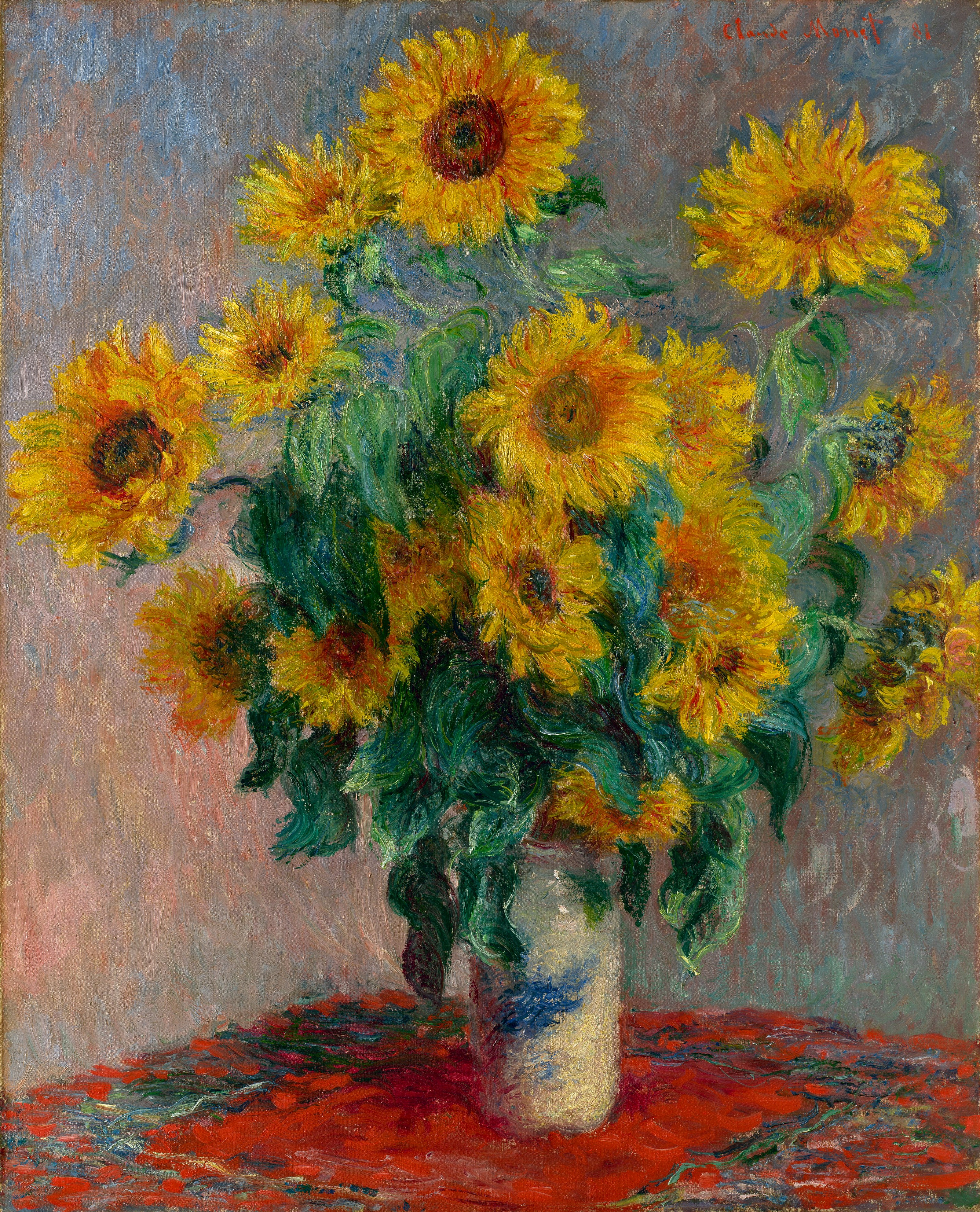
While not as common as canvas or wooden panels, paper offers its own set of advantages in oil painting. It is lightweight, easily portable, and allows artists to achieve various effects due to its absorbent nature. The texture and thickness of different paper types can influence how the paint interacts with the surface, creating unique visual outcomes. Monet's use of paper in his "Sunflowers" series demonstrates his innovative approach to capturing light and atmosphere through unconventional supports.
Recommended Reading and Resources for Oil Painting Beginners:
"Oil Painting For Dummies" by Anita Marie Giddings and Sherry Stone Clifton
If you're new to the world of oil painting, "Oil Painting For Dummies" is a fantastic resource to get you started. This book breaks down the fundamentals of oil painting in a way that's easy to understand, even if you've never picked up a brush before. This book covers everything from learning about different types of brushes and paints to understanding colour mixing and composition. The authors provide step-by-step instructions and helpful tips, making it an invaluable beginner guide.
Online tutorials and video lessons available on platforms like YouTube
In today's digital age, countless online resources are available for aspiring oil painters. Platforms like YouTube offer many tutorials and video lessons that can help you develop your skills quickly. Whether you want to learn specific techniques or follow along with complete painting projects, these videos provide visual demonstrations that make it easier to grasp various concepts. Many artists also share their personal tips and tricks, allowing you to learn from their experiences. So grab your paintbrushes, search for oil painting tutorials online, and explore the vast world of artistic possibilities.
Art supply stores often offer books and guides specific to oil painting techniques
Don't overlook the resources available at your local art supply store. These stores often carry a wide selection of books and guides dedicated to oil painting. These resources cover everything from basic principles to advanced techniques professional artists use. By immersing yourself in these materials, you can gain valuable insights into different approaches and styles within oil painting. Don't hesitate to ask the store staff for recommendations based on your skill level or areas of interest—they'll be more than happy to assist you in finding the perfect resources.
Joining local art groups or workshops can provide valuable guidance and feedback
One of the best ways to enhance your oil painting skills is by joining local art groups or workshops. These communities offer a supportive environment where you can connect with fellow artists, share ideas, and learn from one another. Art groups often organize regular meetings where members can participate in group critiques, receive feedback on their work, and exchange knowledge about various techniques. Workshops led by experienced artists provide hands-on learning opportunities that allow you to refine your skills under expert guidance. Being part of an art community offers a chance to network with like-minded individuals who share your passion for oil painting.
Embrace the Beauty of Oil Painting:
Oil painting is a captivating art form that has a rich history and offers endless possibilities for artistic expression. Whether you're a beginner or an experienced artist, various techniques, supplies, and support options are available to help you explore this medium to its fullest potential.
In understanding the history and facts about oil painting, we can appreciate its significance as one of the most revered forms of artistic expression throughout centuries. From its origins in ancient civilizations to the Renaissance masters who perfected it, oil painting has stood the test of time and continues to inspire artists today.
To embark on your own oil painting journey, having the right supplies is essential. Brushes, paints, palettes, and canvases are just a few of the tools you'll need to bring your vision to life. Investing in high-quality materials will enhance your experience and ensure long-lasting results.
Mastering oil painting techniques is vital to creating stunning artworks. Whether you prefer glazing, impasto, or alla prima techniques, each approach offers unique effects and textures. Experimenting with different methods will allow you to find your style and develop your artistic voice.
Artists have a range of choices. Traditional stretched canvases provide a classic surface for painting; however, alternatives like canvas boards or linen panels offer convenience and flexibility. Exploring these options will enable you to adapt your practice based on your preferences and project requirements.
Studying famous works and examples of oil painting supports can provide valuable insights into different styles and approaches. From landscapes by Claude Monet to portraits by Rembrandt van Rijn, observing renowned artists' techniques can inspire new ideas while honing your skills.
For those starting their journey in oil painting or seeking further guidance, recommended reading resources can be beneficial. Books on colour theory, composition principles, or specific artist biographies offer valuable knowledge and inspiration. Online tutorials, workshops, and art communities also provide learning opportunities from experienced artists and connect with like-minded individuals.
In conclusion, oil painting is a captivating artistic medium that allows you to embrace your creativity and express yourself uniquely. By understanding its history, acquiring the essential supplies, mastering techniques, exploring support options, studying famous works, and utilizing recommended resources, you can embark on a fulfilling artistic journey that brings your imagination to life.
So why wait? Grab your brushes and paints, unleash your creativity, and let the beauty of oil painting unfold before your eyes.
